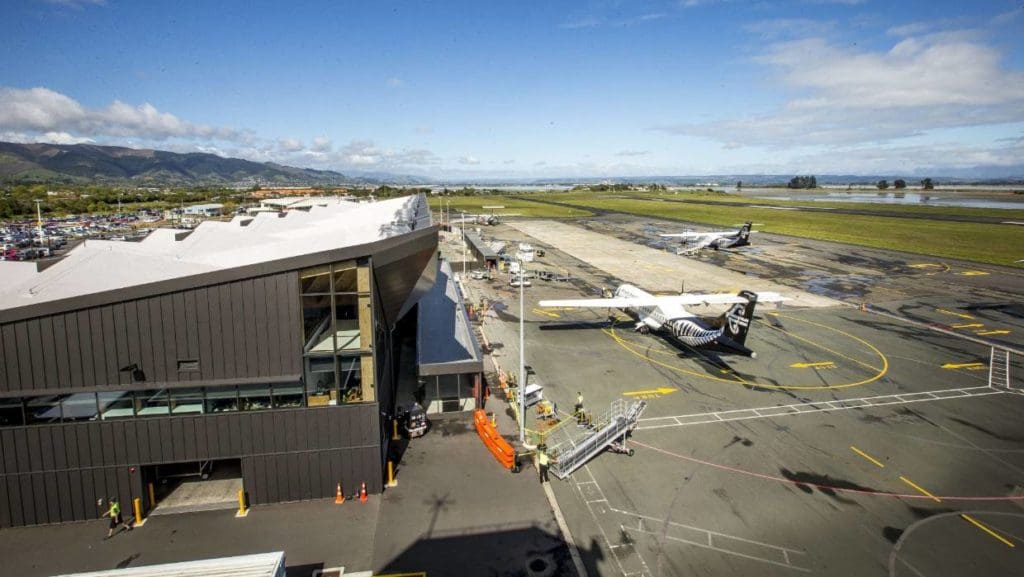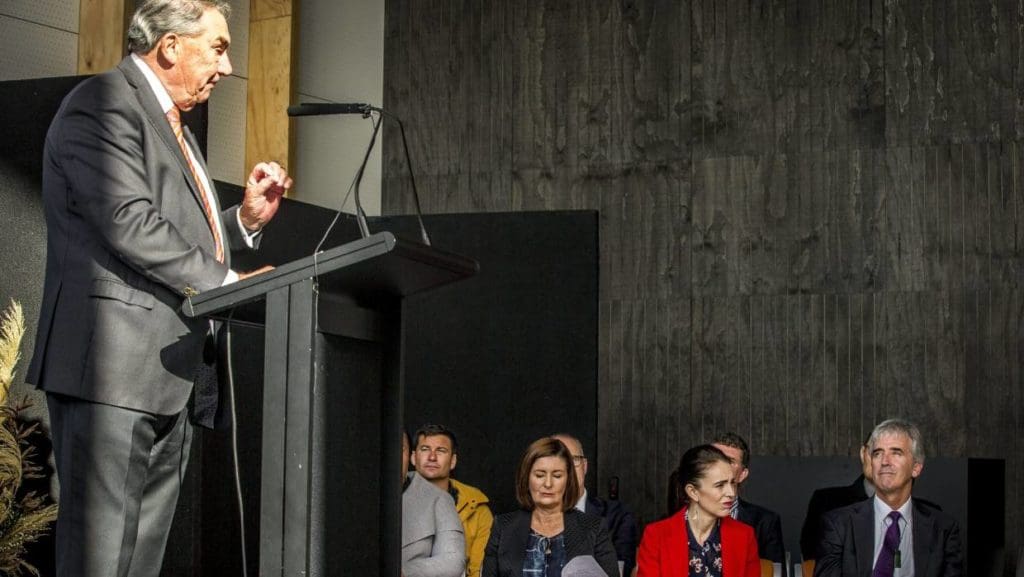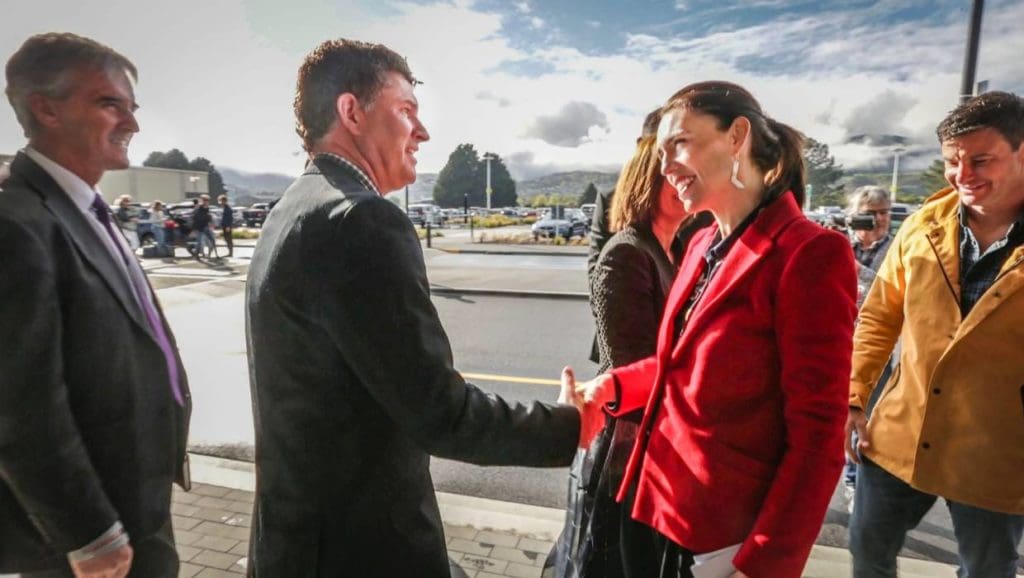New $32m Nelson airport terminal ‘feels like a familiar landscape’

After the first sods were turned in June 2017, Nelson’s new $32 million terminal is complete and will be operational from Monday.
Nelson’s long-awaited new airport terminal has the wood on other centres, according to those on hand to witness its formal opening.
Prime Minister Jacinda Ardern joined Transport Minister Phil Twyford, local dignitaries, Te Tauihu iwi representatives, stakeholders and businesses construction companies in Saturday’s event, which heralded the end of a four-year journey to completion of the $32 million terminal upgrade.
After a long wait for the ambitious project to come to fruition, two rainbows across the runway was a welcome sight for Nelson Airport chief executive Rob Evans as he arrived for the ceremony .

Nelson Airport Limited board chairman Paul Steere speaks at the opening ceremony.
“I knew it was going to be a very special day,” he said.
Jointly owned by the Nelson city and Tasman district councils, the airport company began the redevelopment – led by a construction consortium of construction companies Naylor Love, Gibbons and Fulton Hogan – in June 2017, with an expectation it would take two years.

LUZ ZUNIGA/STUFF
Prime Minister Jacinda Ardern greets new Tasman Mayor Tim King at the formal opening ceremony of the new Regional Airport on Saturday. Also pictured is retired Tasman Mayor Richard Kempthorne, left and Ardern’s fiance Clarke Gayford.
The redevelopment project was started in response the rapid growth in passengers and airlines using the airport.
The new infrastructure has been designed to cater for the forecast growth to 1.4 million passengers in 2035
Since then a number of milestones have signalled progress on the project, from the demolition of the old terminal and erection of a new control tower, a 40 per cent extension of car parking to 920 spaces and the first stage of completion in October 2018.
Nelson Airport Limited chairman Paul Steer said while the project had been finished slightly behind schedule, the company had managed to bring home the self-funded building under budget.
The 5500 square-metre building’s structure is made of timber, using 209 tonnes of Nelson-processed Laminated veneer lumber (LVL) sourced from Nelson pine forests.
To replicate the mountain skyline of Nelson’s Western Ranges, 36 triangular roof panels weighing seven and a half tonne each were craned into place with less than 5mm of tolerance between each panel.
Passengers inside the terminal are afforded panoramic views of the region thanks to floor to ceiling windows containing 1300 square metres of of glass.
Final touches have been made in recent days to ensure the building looked in perfect order for Saturday morning’s opening, including a flagpole situated at the airports entrance.
Car parking has increased to a total of 920 parks, and for the first time in Nelson, a new baggage carousel will be available for passengers.
The final changeover of check-in desks will take place on Monday evening, in readiness for Tuesday’s first flights, while the Koru Lounge will shift to the southern end in December.
Steere said with Nelson Airport’s 1 million passengers each year making it second to Queenstown in the per capita stakes, it was important to ensure Nelson was prepared for its growth as a national transport hub.
He also reinforced NAL’s commitment to sustainability, including involvement in the testing and development of electric planes, while in the coming months the airport hoped to improve on the 80 solar panels that were used in the old terminal.
“We cannot not fly, but we can minimise our carbon creation.”
Steere said while the recent decision by Jetstar to cut its domestic passenger services in and out of Nelson was disappointing, he anticipated an upswing of visitors and passenger numbers in the next 18 months.
Nelson Mayor Rachel Reese said the terminal was not a civic building, but had the presence of one.
She congratulated NAL and all involved in the “ambitious project” for completing the build to such a high standard.
“One of the goals … was to create a building that feels like it belongs to us, a place we can celebrate who we are and this does exactly that.
“It feels like a familiar landscape and feels like coming home.”
Ardern said whether they were big or small, airports were a symbol of connection, which formed an important part of Kiwi life.
“It helps us maintain links with other regions, but also with one another – and in a country where half the population lives outside the main centres, it is vital to our well-being and prosperity that we are able to maintain those links.
“If local terminals reflect who we are as a region, then this has done that.”
As a token of gratitude, Evans presented Ardern with a specially-created ring made by local jewellers Jens Hansen and designed from a winning design by Erika Hansen.
Credit: Tim O’Connell, Stuff

This Post Has 0 Comments